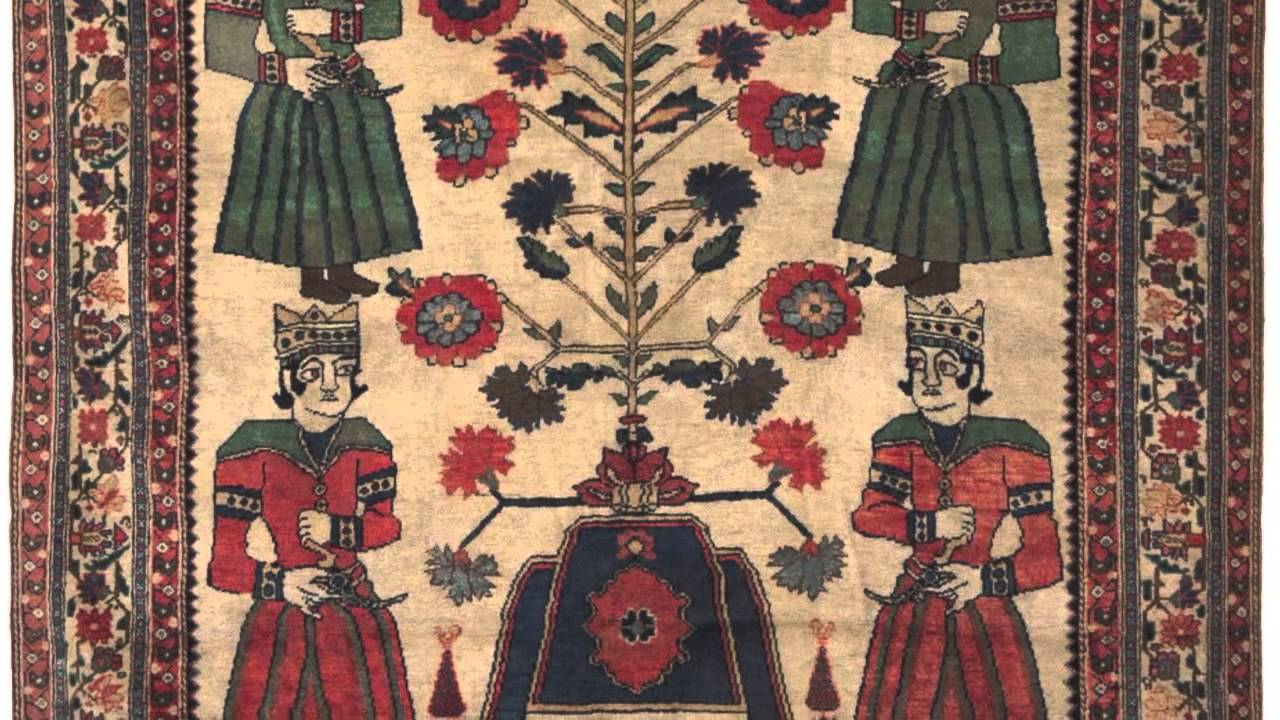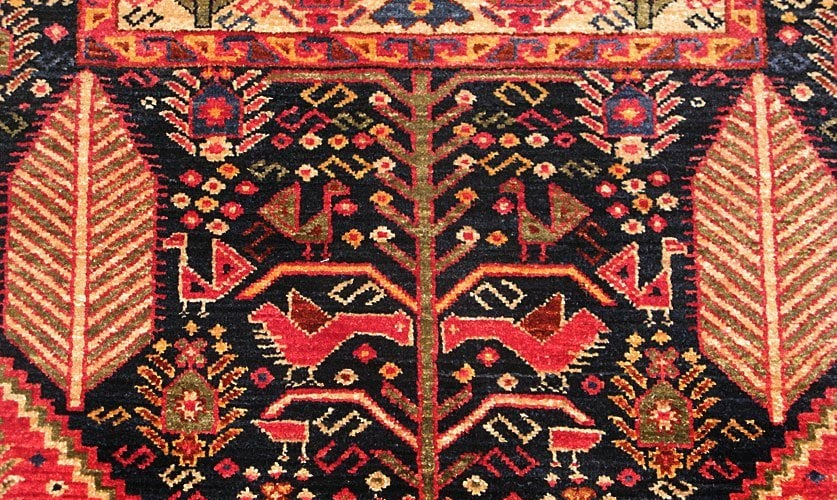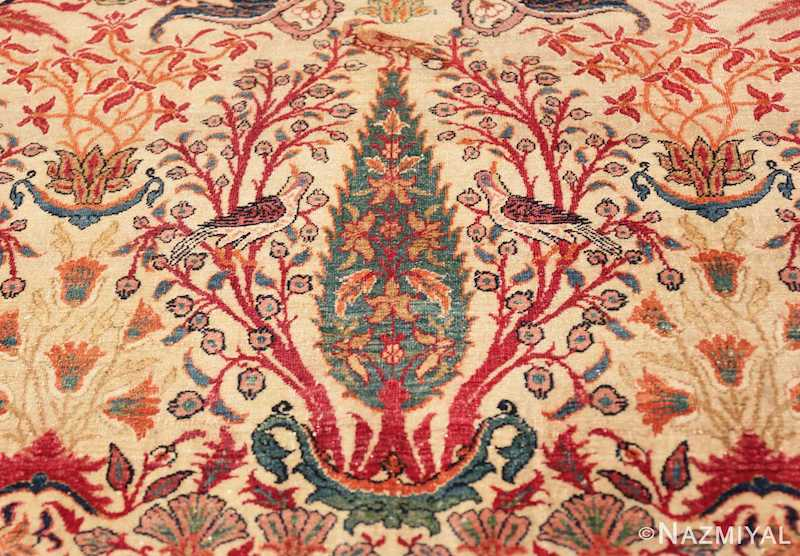Everything About Hidden Symbols in Oriental Area Rugs
Handmade rugs are more than just a beautiful, luxurious décor item, or a practical, functional, fuzzy friend that protects your feet from the unbearable cold floor on a winter night.
These hand-knotted pieces of art are an emblem of sheer magnificence that’s radiated through their traditional design patterns and bold hues.
And the best thing about handmade Oriental rugs is the fact that each piece tells a unique story!

Rugs and the Ancient Language of Symbols
In the early days of carpet weaving, the language of symbols was considered to be the most universal way of human expression. It was the language of life in all forms, with symbols that had complex meanings and signified vital ideas such as love, fertility, power, masculinity, life, and death.
Although these symbols are often hard to interpret, they’re quite convincing even today and are used to communicate spiritual beliefs and ideas from one generation to the next.
Moreover, it’s not just the Oriental rugs that are filled with mysterious symbols, the design patterns on handmade kilims, Caucasian rugs, Bokhara rugs, and many other tribal handmade rugs also incorporate symbolic imagery that’s inherently traditional and suggestive of the weavers’ life, history, beliefs, and traditional values.
However, a lot of rug experts think that symbols in floor coverings are a lost language, and that their original meaning is unknown not just to those who own these rugs, but also to the ones who craft them.
What Are Rug Symbols About?
Oriental handmade rugs were first crafted by nomadic tribes in parts of Anatolia and Persia, and these were used not just as floor coverings, but also in the form of blankets, wall hangings, saddlebags, curtains, and for other utilitarian purposes.
Just like all other forms of art, carpet weaving has ancient roots that evolved from the ideas of religion, spiritual beliefs, myths, and more.
Hence, the symbols that are a part of Oriental rug patterns revolve mostly around tribal beliefs and are a form of spiritual refuge for mankind.
Moreover, one could say that the reasons behind the origin of these artifacts had more to do with mysticism than their practical use in everyday life. As Félix Martí Ibáñez says, the rug is a “blackboard” on which the weavers write their “secret dream – life in the cabalistic language of symbols.”
Animal Symbols in Oriental Rugs
In various ancient religions and cultures, animals were often perceived as Gods, they were worshiped and the spirits of slain animals were feared.
Moreover, some tribes even mummified animals and their bodies were preserved to be associated with deities.
Also, various animals were thought of as human protectors who had supernatural powers and weaving their symbolic images in rugs was a common way of enshrining them forever.

Here’s what the popular animal symbols on oriental rugs meant:
- Bird: The symbol of bird signified faith and fertility. In some rugs, birds in flight symbolized good news.
- Bull/Cow: Symbols of earth and mankind.
- Camel: Wealth, fertility, and prosperity are the meanings of a camel symbol.
- Chicken: This animal symbol is thought to offer protection from the evil eye.
- Dog: Since dogs are often used for safety purposes even today, they symbolize protection and defense.
- Dragon: The popular symbol of power.
- Duck: Marital fertility and enchantment.
- Eagle: We all know about the famous Eagle rug in the Oval office in White House. Guess what it symbolizes? Power!
- Parrot: It’s a common Chinese symbol of protection and escaping from danger.
- Peacock: This gorgeous animal symbolizes immortality.
- Ram’s Horn: A common symbol found on many Oriental rugs, the Ram signifies power, masculinity, and heroism (guess feminists won’t be investing in Oriental rugs anymore).
- Scarab: A symbolic image often seen in Caucasian and tribal rugs, the scarab is believed to offer protection.
- Scorpion: We’ve seen a lot of scorpions in The Mummy, and while they scared us in the movie, in a rug they’re meant to offer protection.
- Snake: Another scary animal symbol that acts as a guardian when woven into rugs. Snakes also signify wisdom and happiness.
- Wolf’s Mouth: This one’s all about protection.
Plant Symbols in Oriental Rugs
It’s not just animals that we see on handmade rugs, there’s nature all over them!
In other words, a lot of rug designs include trees, plant, flowers, etc., and while they look pretty, most rug owners don’t know what the symbols mean.

Here’s a list of popular plant symbols and what they signify:
- Blossom: Youth, spring, and newlyweds!
- Burdock: It’s a symbol of abundance, and is also though to ward off evil eye.
- Cypress Tree: It’s the tree of everlasting life and immortality.
- Grain: Abundance (of food, maybe), and fertility.
- Hyacinth: Regeneration.
- Iris: Religious liberty.
- Lily: Purity and spirituality.
- Lotus: Immortality and rebirth.
- The Tree of Life: In oriental rugs, the tree of life is a popular symbol of a tree from its roots in the soil to the branches, it signifies afterlife, immortality, and longevity.
- Pomegranate: Fertility.
- Tulip: Prosperity.
Other Common Rug Symbols
Oriental and tribal handmade rugs are art pieces that include symbols other than animals and plants too, such as:
- Water: Represented in different shapes and designs, the symbol of water signifies fertility, cleanliness, paradise, life, and man’s desire to overcome obstacles.
- Fire/Light: Fire is worshiped even today in various religions. Hence, the symbol is an inspiration of God.
- Hands on Hips: It’s a popular Goddess symbol representing fertility and motherhood.
- Love and Union: Have you seen the popular taijitu or yin-yang symbol? Yes, it’s called Love and Union, and represents harmony between a man and a woman.
- Hand Comb: The symbol of hand protects against the evil eye in many cultures, and comb protects marriage and birth.
- Vine: Wealth, beauty, peace, tranquility, and eternal life.
All in all, Oriental rugs aren’t just captivatingly beautiful, but they’re also great storytellers filled with meaningful symbolic imagery.
Plus, there are numerous ways of making your interior décor standout with Oriental rugs!













